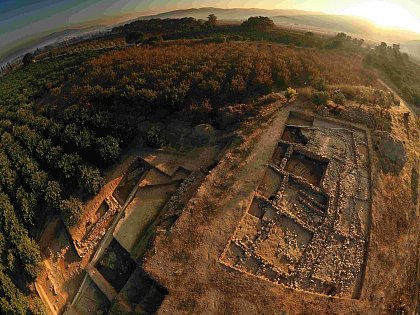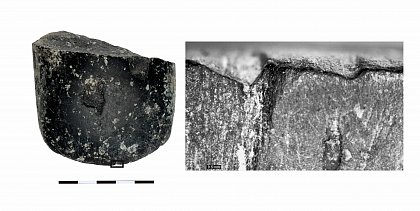Tools that changed the world: The stone axes at Çukuriçi Höyük, Turkey in 3D visualization
PI PD Dr. Laura Dietrich and Prof. Dr. Barbara Horejs
Funding Holzhausen-Legat, Austria.
The Neolithic to Bronze Age multistratified settlement of Çukuriçi Höyük, Turkey was extensively investigated between 2011-2016 within the framework of several FWF and ERC-funded projects (PI Prof. Dr. Barbara Horejs). Several excavation sections revealed stone and mud structures (houses, silos, masonry) from the 7th millennium (Neolithic, phases ÇuHö XIII-VIII), the 4th millennium (Copper Age, phases VII-Vb), and the 3rd millennium (Bronze Age, phases IV-III) with a rich inventory of artifacts. Architecture and finds have been presented in numerous monographic papers and essays and made available to the academic community as scholarly publications on the repository of the ERC Prehistoric Anatolia project .

Çukuriçi Höyük: the site during the excavations (photo N. Gail © OeAI-OeAW)
Stone axes are one of the most common find categories among Neolithic implements comprising 84 pieces. This is not a coincidence, due to the fact that axes are one of the most important implements in the Neolithization process, the transition to settledness and a productive way of life through agriculture and animal husbandry. Axes were mainly used for the creation of the new way of life through land clearance and for the construction of buildings. However, they were also used in everyday life, especially in architecture and interior decoration, and in the production of food, for example as butcher's tools. All of these functions can be determined through traceological analyses. Methods range from functional morphometrics on 3D models to microscopy and experimental archaeology. Axes are also aesthetic artifacts and exhibit specific functions in social-cultural contexts, as objects of prestige and exchange; they circulate over long distances, are exchanged and inherited. Thus, they are central objects in the Neolithic society, and can offer accurate information about the implementation and intensity of everyday tasks when studied through traceology. The aims are an online publication of the complete stone axe inventory from the settlement of Çukuriçi Höyük, Turkey, as an open access publication with 3D models, and a detailed functional study through traceology.
Link to the project website within the group Praehistoric Phenomena (https://www.oeaw.ac.at/en/oeai/research/prehistory-wana-archaeology/prehistoric-phenomena/the-traceological-analysis-of-the-stone-axes-from-cukurici-hoeyuek-turkey )

Neolithic stone axes from Çukuriçi Höyük (photo N. Gail © OeAI-OeAW; 3D Models and microphotographs Laura Dietrich, ©Laura Dietrich)

Neolithic stone axes from Çukuriçi Höyük (photo N. Gail © OeAI-OeAW; 3D Models and microphotographs Laura Dietrich, ©Laura Dietrich)



